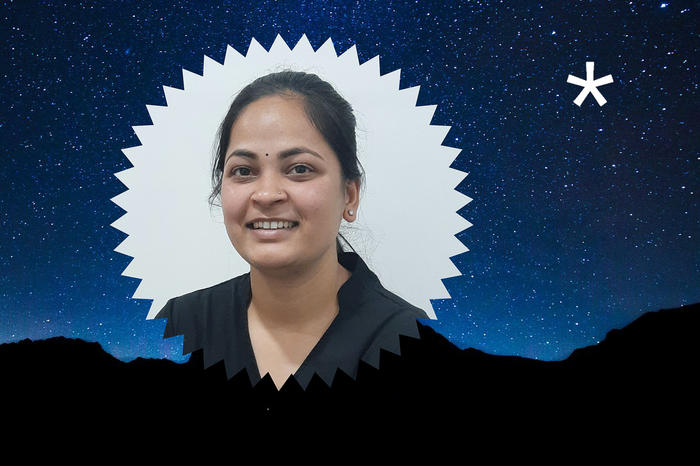Chethana
Physicist
14.03.2023
The physicist Chethana came to Freie Universität Berlin as a Rising Star in September 2022.
The aim of this project will be to develop new labeling approaches for Expansion Microscopy to allow for multicolor labeling of structures in fly brains, especially Drosophila. In this project Chethana wants to combine her background in the development of carbon nanodots, quantum dots, and other nanoparticles as fluorescent probes for imaging in cells with the experience in assay development for fluorescence lifetime combined with superresolution microscopy in the Ewers laboratory.
She would like to establish methods based on fluorescence lifetime imaging to allow for the acquisition of up to 5-6 color channels in cells and tissues with Expansion Microscopy. The resulting approach will be required to understand the functional interaction of several molecules with each other during the outgrowth of neuronal axons in the formation of neuronal brain connectivity. This collaborative work is devised to yield unprecedented insight into the cytoskeletal contribution to growth cone steering in the establishment of connectivity using the fly as a model.
Chethana studied Physics, Mathematics and Chemistry in her bachelor at the Mangalore University and graduated with a master's degree in Physics at the National Institute of Technology Surathkal in India. She obtained her Ph.D. degree from school of basic sciences from the Indian Institute of Technology Mandi in India.
“I am trained physicist who is enamored by the colourful world of high resolution optical microscopy, which led me to gain expertise in the fluorescence lifetime imaging technique during my doctorate. Then I was looking for postdoc opportunities that allowed me to tackle some serious biological questions which excited and challenged me at the same time using the same technique. Fortunately, I stumbled upon the group led by Prof. Helge Ewers that perfectly blends new microscopy technique development with unveiling the structure-function relationship of proteins in complex cellular environment. When I contacted Prof. Ewers, I found out about this fellowship and decided to design this project. After few rounds of interaction with both Prof. Ewers and Prof. Hiesinger, we came up with a project which was suitable for the fellowship, that symbolizes the amalgamation of knowledges from different streams towards solving a problem.The one thing that impressed me the most about the science scene in Berlin, would be the ease with which different labs collaborate and strive to get things done. I really appreciate that. The department in particular also has a good collaboration spirit and interactive scientific environment.
The opportunity to meet and get acquainted with many world class biochemists and see how they use the super resolution technique for solving interesting biological problems. May be establish some long term collaborations before I return to India.”
